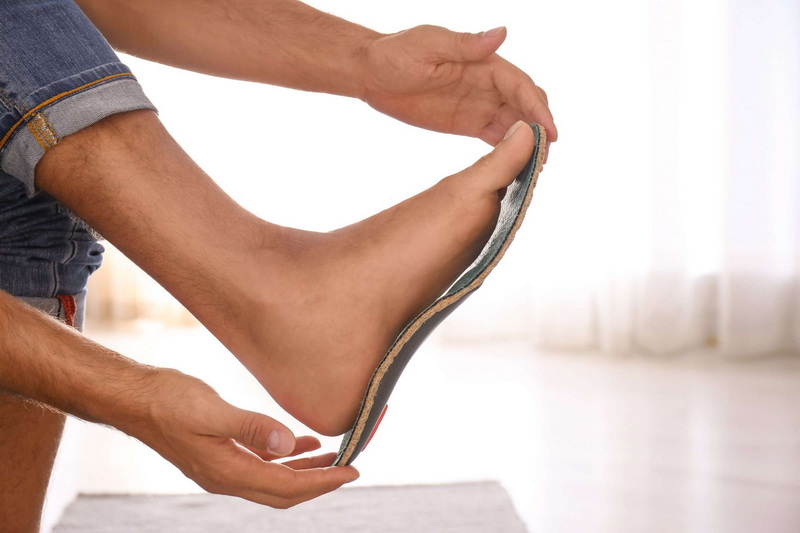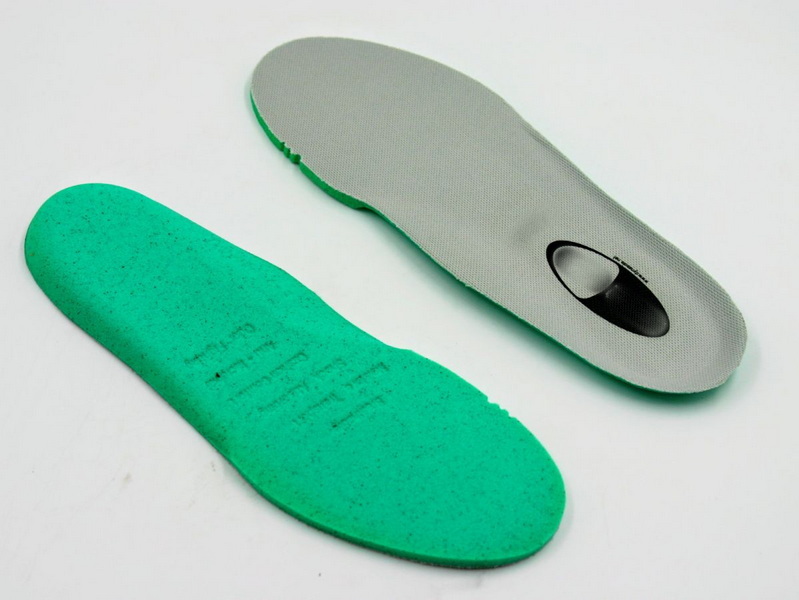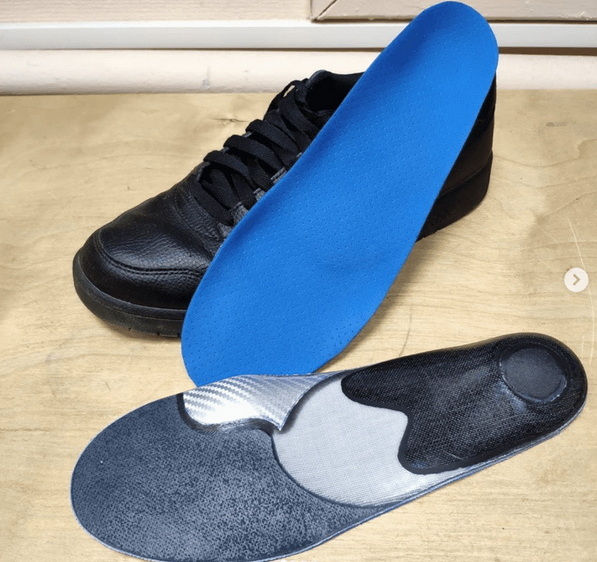Views: 222 Author: Edvo Publish Time: 2025-10-23 Origin: Site











Content Menu
● Understanding Arch Support Insoles
● Types of Arch Support Insoles
>> 2. Medium Arch (Neutral Feet)
● Key Benefits of Arch Support Insoles
>> 1. Improve Comfort and Posture
>> 2. Relieve Foot and Joint Pain
>> 3. Reduce Fatigue and Enhance Performance
>> 4. Promote Foot Health for All Ages
>> 5. Prevent Long-Term Complications
● Advanced Materials in Arch Support Insoles
>> EVA (Ethylene Vinyl Acetate)
>> Gel Inserts
>> TPU and Carbon Fiber Components
>> Recycled and Eco-friendly Materials
● OEM and ODM Production in China
>> Advantages of OEM Production
>> OEM/ODM Manufacturing Process
● How to Select the Right Arch Support Insole
>> Identify Your Foot Arch Type
>> Consider Your Activity Level
>> Evaluate Material and Construction
● Maintenance and Longevity of Arch Support Insoles
● Why Brands Choose Chinese EVA Insole Manufacturers
● Future Trends in Arch Support Technology
● FAQs
>> 1. What type of arch support is best for flat feet?
>> 2. Can arch support insoles relieve knee or back pain?
>> 3. Are EVA insoles durable enough for sports?
>> 4. Can I customize arch support insoles for my business brand?
>> 5. How often should I replace my insoles?
Arch support insoles have become one of the most recommended foot care solutions available today. They not only enhance comfort but also play a crucial role in overall body alignment and injury prevention. Whether you're an athlete seeking better performance, a worker who spends long hours standing, or someone suffering from flat feet or plantar fasciitis, understanding the benefits of arch insoles can make a noticeable difference in everyday life. This article offers a comprehensive look into their design, materials, manufacturing process, and how they add value to both users and brands seeking OEM customization for global markets.

Arch support insoles are specialized inserts designed to provide proper alignment and cushioning for the feet. The human foot has three natural arches — medial, lateral, and transverse — that help distribute body weight and absorb shock during movement. However, when these arches weaken or collapse, it causes discomfort, pain, and imbalance.
Arch support insoles are engineered to restore that balance. By supporting the natural curvature of the foot, they reduce uneven pressure points and maintain a healthy stride. They also help the body achieve proper posture by aligning the ankles, knees, hips, and spine.
When a person stands or moves, the arch and heel bear most of the pressure. Arch support insoles help distribute this load evenly across the foot, preventing overpronation (rolling inward) and supination (rolling outward). This support stabilizes your gait and lessens the chance of chronic pain in multiple joints.
They also act as shock absorbers, cushioning every step and improving overall comfort. With the right pair of insoles, users experience less fatigue at the end of the day, better stability, and increased endurance.
Not all insoles are alike. The structure and arch height vary depending on your foot type and daily activities. Recognizing these distinctions helps ensure the perfect fit for your needs.
People with flat feet need firm control and deep heel cups that prevent their feet from rolling inward. Insoles for flat feet are designed to sustain proper motion and alleviate strain on ligaments and muscles.
A neutral arch is the most common foot type. Medium arch insoles provide balanced support and cushioning suitable for walking, casual wear, and moderate physical activity. They maintain flexibility without restricting movement.
Individuals with high arches usually struggle with poor shock absorption because the arch doesn't naturally flex. High arch supports add soft, thick cushioning beneath the arch and at the heel and forefoot to distribute weight evenly across the foot.
Custom orthotics are designed using 3D scanning or molding technology that perfectly matches the user's foot shape. These insoles are widely used in medical and sports fields, offering personalized correction and maximum comfort.
The most obvious benefit is comfort. Good arch support aligns your feet properly, allowing your body weight to distribute evenly. This minimizes stress on your ankles and lower back, helping you maintain better posture throughout the day.
Arch support insoles are particularly effective for people struggling with plantar fasciitis, heel pain, and shin splints. By supporting the natural shape of the foot, they help relieve inflammation in the fascia, tendon, and muscles. This prevents long-term damage and speeds recovery from strain-related injuries.
Both athletes and workers who stand for long periods benefit from insoles with proper support. When your feet are well cushioned, blood circulation improves and muscles don't tire quickly. This leads to prolonged energy and improved performance in sports and daily tasks.
Children, adults, and seniors all gain from arch support. For growing children, it encourages healthy bone and muscle development. For seniors, it ensures balance and prevents falls caused by instability or joint stiffness.
Without adequate support, chronic overpronation or supination can lead to knee, hip, and back problems. Continuous pressure on the same areas of the feet causes calluses, bunions, and general structural misalignment. Arch supportive insoles act as preventive tools that protect the feet from these progressive conditions.

Modern insole manufacturing integrates advanced material technologies that combine lightness, resilience, and comfort. Material choices affect not only user experience but also brand differentiation in international markets.
EVA is widely recognized for its lightweight flexibility, high cushioning response, and excellent comfort level. It remains a staple material among EVA insole manufacturers because of its easy moldability and adaptable density levels. EVA foam provides long-lasting shock absorption, ideal for both sports and everyday wear.
PU insoles excel in resilience and wear resistance. They maintain elasticity even after extensive compression cycles, making them a go-to choice for heavy-duty and industrial footwear.
Gel inserts enhance cushioning by targeting high-impact zones. They are often combined with foam or EVA structures to provide hybrid comfort, particularly for running shoes and high-performance athletic boots.
For high-performance applications, manufacturers incorporate TPU (thermoplastic polyurethane) or carbon fiber reinforcement beneath the arch. These materials add rigidity, stability, and superior energy return.
Sustainable manufacturing trends have encouraged suppliers to introduce eco-friendly EVA foams and recycled fabrics. These materials meet environmental standards while maintaining product quality and durability.
China remains a global powerhouse in footwear manufacturing, particularly for OEM (Original Equipment Manufacturing) and ODM (Original Design Manufacturing) in the insole industry. Partnering with experienced Chinese factories brings significant advantages for international footwear brands, distributors, and wholesalers.
- Full customization from design concept to packing
- Access to diverse material options at competitive pricing
- Rapid prototyping using advanced molding and foaming machines
- Branding services like embossed logos and private label packaging
- Compliance with international quality standards for global export
1. Design Concept – Brands share sketches, material preferences, and intended application.
2. Sampling Stage – Factory engineers create a prototype adjusted to customer feedback.
3. Mold Fabrication – CNC precision machines craft custom insole molds for mass consistency.
4. Production and Foaming – Automated workshops produce large quantities while maintaining uniform density.
5. Trimming and Finishing – The insoles are cut, shaped, and inspected for dimensional accuracy.
6. Packaging and Branding – Final products are customized with private label packaging ready for shipment.
This structured workflow ensures non-stop quality control from concept to completion, allowing overseas clients to launch products confidently in retail or e-commerce channels.
The best arch support insoles fit your foot shape, match your shoes, and suit your activity level. Selecting incorrectly designed insoles can cause discomfort instead of relief.
A simple “wet footprint test” can help identify your arch type. High arches leave narrow prints, low arches appear almost flat, and normal arches display slight curvature. Choose insoles accordingly for maximum benefit.
- Athletes: Require insoles with firm support, responsive cushioning, and shock absorption.
- Office Workers or Walkers: Need balanced cushioning for comfort and long wear.
- Industrial or Outdoor Workers: Benefit from PU or dense EVA insoles offering impact resistance and stability.
Running shoes, hiking boots, dress shoes, or safety footwear each demand distinct insole characteristics. Always match the material density and thickness to footwear design.
Pay attention to the foam layer, top fabric, and overall flexibility. Breathable fabrics reduce moisture accumulation, while antibacterial coatings extend hygiene.
Proper care ensures durability and hygiene. Here's how to maintain high-performing insoles:
- Take them out regularly to let them air dry after use.
- Clean the surface with a mild soap solution; avoid full immersion.
- Protect them from excessive heat or direct sunlight.
- Rotate pairs if you use multiple shoes daily.
- Replace every six to twelve months depending on wear level.
Over time, insole compression and odor buildup can reduce effectiveness. Regular maintenance assures consistent support and comfort.
As demand grows for orthotic-grade insoles worldwide, Chinese OEM factories have become preferred partners for brands expanding internationally. Their integrated production systems combine cost efficiency, quality control, and innovation.
- Skilled technicians use high-precision molding equipment for consistent shaping.
- Factories are capable of mass manufacturing to meet seasonal demand surges.
- Materials can be tailored to each region's requirements—climate, hardness preferences, or eco regulations.
- Low minimum order quantities make it easier for startups to test their markets.
- R&D teams develop new blends, including memory foam and antibacterial EVA sheets.
This strong industrial ecosystem enables foreign buyers to maintain brand identity while offering advanced, affordable insoles that meet global consumer expectations.
The insole industry continues to evolve toward smart integration and environmental innovation. Future developments include:
- Smart Insoles: Equipped with sensors that track gait and posture data for personalized feedback.
- 3D Printed Orthotics: Allow for precision customization and lightweight designs.
- Recyclable EVA Composites: Reduce waste and carbon footprint.
- Hybrid Cushion Layers: Combine gel, foam, and air pockets for optimal energy return.
These advancements offer brands new opportunities to differentiate their products and respond to sustainability-focused consumer trends.
So, are arch support insoles good? Without a doubt, they are one of the most effective methods for improving foot comfort and preventing musculoskeletal problems. From posture correction and fatigue reduction to enhanced sports performance, the benefits are substantial.
For brands and distributors, partnering with EVA insole manufacturers in China ensures access to world-class technology, materials, and flexible OEM customization. Whether you are launching a premium sports footwear line or casual comfort brand, high-quality arch support insoles serve as the perfect foundation for your product success.

Firm insoles with deep heel cups and stable medial arch reinforcement are ideal for controlling overpronation and supporting flat feet.
Yes. Proper arch support aligns the entire lower body chain, reducing strain on knees, hips, and the lumbar spine by promoting natural posture.
Absolutely. EVA's flexibility and shock absorption make it excellent for running, hiking, and high-impact sports activities while maintaining lightweight comfort.
Yes. OEM manufacturers allow full customization—from material hardness, thickness, and color to logo engraving and packaging designs.
It depends on frequency of use, but typically every 6 to 12 months. Worn or flattened foam indicates it's time for replacement.